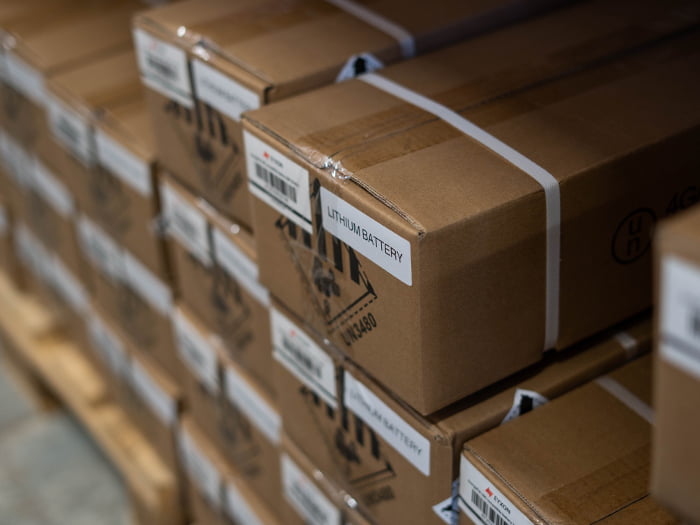Safety first in the battery trade with Batteryguard charging cabinet
Today, many online stores offer an extensive range of batteries for e-bikes and scooters. These batteries are often available from stock and are sometimes returned. Additionally, many of these businesses focus on refurbishing and repairing bike batteries.
But these used batteries pose a risk when you put them on the charger, for example, to test them. Lithium-ion batteries can spontaneously catch fire, with all the consequences that entail.
Have you ever thought about safely charging your batteries?
The lurking danger of used lithium-ion batteries
A storage room full of brand-new batteries seems completely safe. These batteries are not yet activated and are in a kind of sleep mode. But often, you also have batteries lying around that need to be refurbished or have been returned. Perhaps because they are defective or simply because the consumer has exercised their right of withdrawal.
The situation then suddenly becomes much more complex. These previously used batteries can have internal damage, posing a serious danger: the risk of a battery fire. Such fires are notorious for their intensity, the complexity of extinguishing them, and the dangerous, sometimes explosive, toxic smoke they release.
Batteryguard prevents battery fires
The risks associated with charging used batteries call for a specialized solution. And that’s where the Batteryguard lithium-ion battery cabinet comes in. Our safe is designed to contain fires and explosions within the cabinet, preventing the spread of fire to your premises.
A recent example from e-bikeaccu.nl illustrates the effectiveness of the Batteryguard lithium-ion battery cabinet. When a battery spontaneously caught fire there, the damage was limited because the battery was in a Batteryguard safe. The fire did not spread to the premises, and the stock in the warehouse remained intact.
The visions of insurers
Insurers have also recognized the risks of lithium-ion battery fires. They see claims increasing and, therefore, set additional requirements for the storage of used lithium batteries.
For instance, Nationale-Nederlanden demands that batteries that have been put into use must be stored in a fire-safe lithium cabinet, like the Batteryguard. This underscores the importance of a safe storage method in the battery trade.
Batteryguard recently interviewed risk expert Bart van de Broek from Nationale-Nederlanden. He discussed the impact of a battery fire. Continue reading in the blog Nationale-Nederlanden talks about lithium battery fire.
New requirements for safe battery storage
The range of storage solutions for lithium-ion batteries is vast and diverse, making it difficult for you as an entrepreneur to make the right choice. Fortunately, a change is coming with the publication of the new VDMA 24994 paper, which outlines the requirements for safe battery storage. This document will serve as a guide for selecting the appropriate storage solutions.
Our Batteryguard XL has been tested during the development of the VDMA 24994 paper.
How the Batteryguard charging cabinet works
Batteryguard is the safe where you charge and store all batteries. The safe is designed so that if a battery catches fire, the fire stays inside the safe, and does not spread to the rest of the premises.
Our safe has a solid fire-resistant construction and a sturdy lock on the door. That’s certainly no luxury, because it must withstand the enormous pressure that occurs during a battery fire.
Contact us
As a business owner in the battery trade, it’s crucial to think not only about the sale and delivery of batteries but also about the safety of storage and charging. If you want to know more about how the Batteryguard charging cabinet can secure your battery trade, please contact us for more information.











